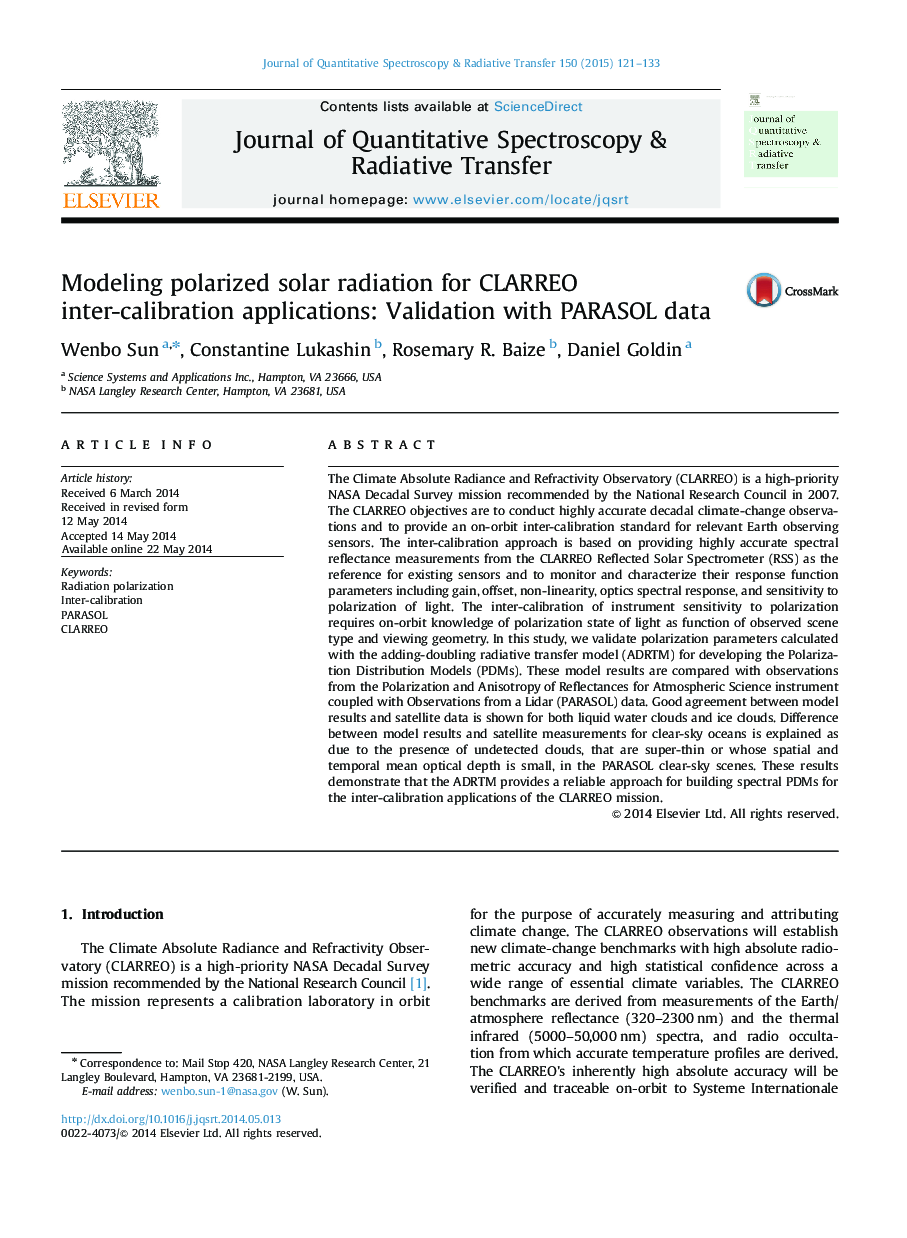| Article ID | Journal | Published Year | Pages | File Type |
|---|---|---|---|---|
| 5428179 | Journal of Quantitative Spectroscopy and Radiative Transfer | 2015 | 13 Pages |
â¢Modeling polarization state of light is necessary in correction of satellite data.â¢Modeled polarization values are compared with PARASOL measurements.â¢Clear-sky difference in model and satellite data is due to undetected clouds.â¢Modeling can produce reliable spectral polarization distribution models.
The Climate Absolute Radiance and Refractivity Observatory (CLARREO) is a high-priority NASA Decadal Survey mission recommended by the National Research Council in 2007. The CLARREO objectives are to conduct highly accurate decadal climate-change observations and to provide an on-orbit inter-calibration standard for relevant Earth observing sensors. The inter-calibration approach is based on providing highly accurate spectral reflectance measurements from the CLARREO Reflected Solar Spectrometer (RSS) as the reference for existing sensors and to monitor and characterize their response function parameters including gain, offset, non-linearity, optics spectral response, and sensitivity to polarization of light. The inter-calibration of instrument sensitivity to polarization requires on-orbit knowledge of polarization state of light as function of observed scene type and viewing geometry. In this study, we validate polarization parameters calculated with the adding-doubling radiative transfer model (ADRTM) for developing the Polarization Distribution Models (PDMs). These model results are compared with observations from the Polarization and Anisotropy of Reflectances for Atmospheric Science instrument coupled with Observations from a Lidar (PARASOL) data. Good agreement between model results and satellite data is shown for both liquid water clouds and ice clouds. Difference between model results and satellite measurements for clear-sky oceans is explained as due to the presence of undetected clouds, that are super-thin or whose spatial and temporal mean optical depth is small, in the PARASOL clear-sky scenes. These results demonstrate that the ADRTM provides a reliable approach for building spectral PDMs for the inter-calibration applications of the CLARREO mission.
